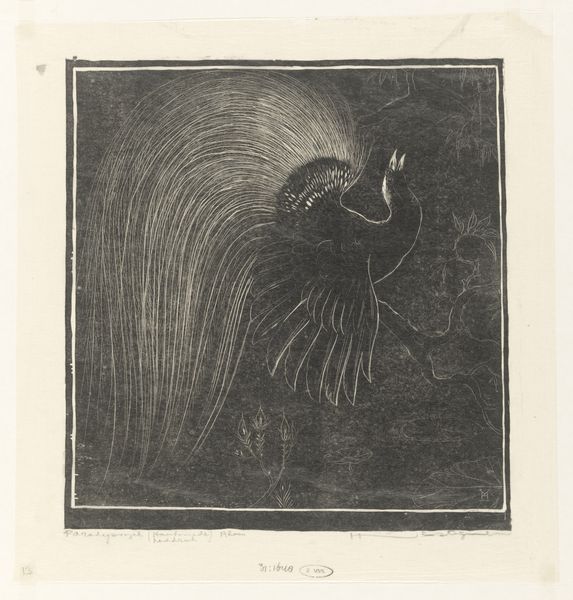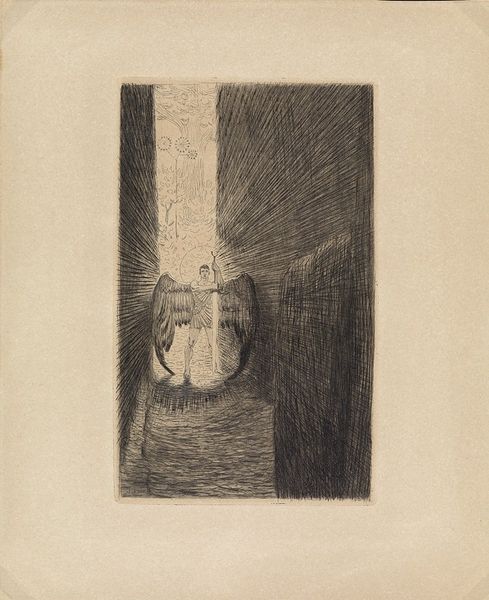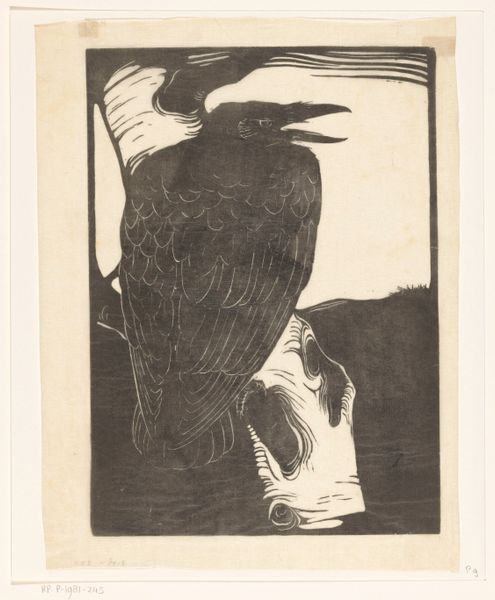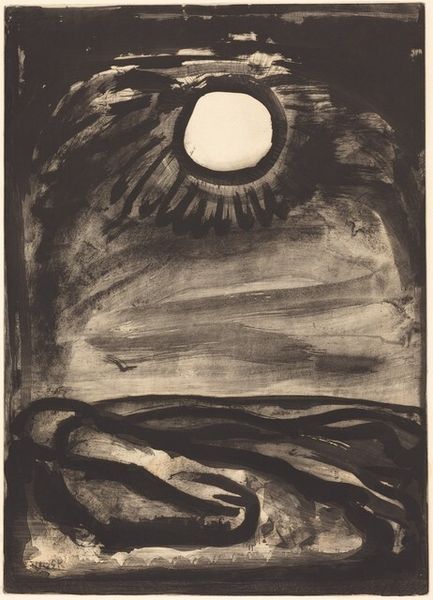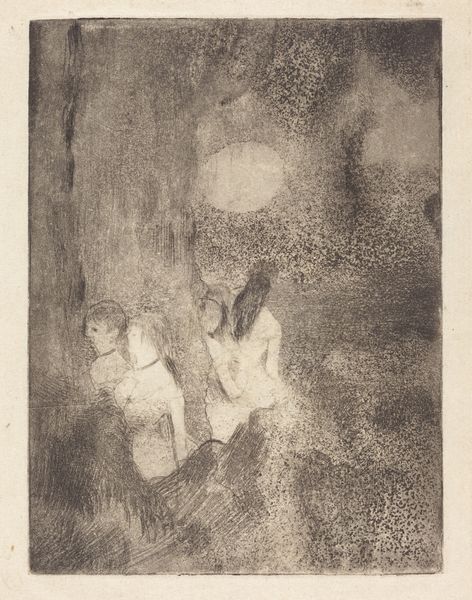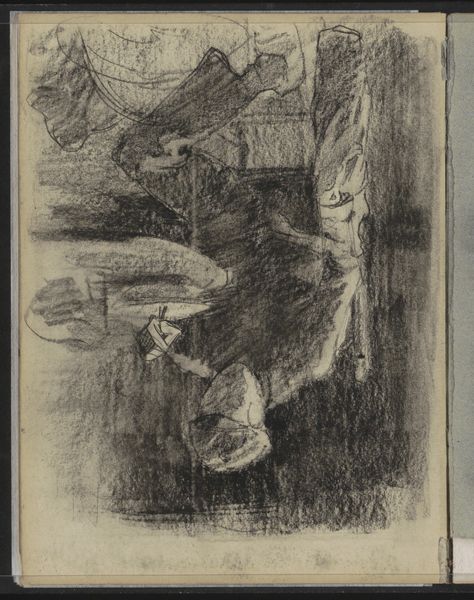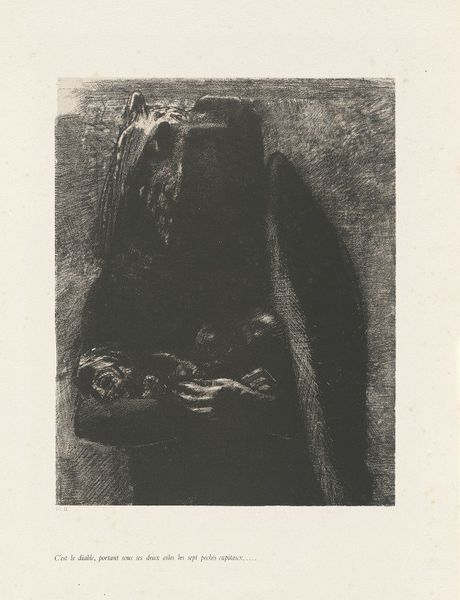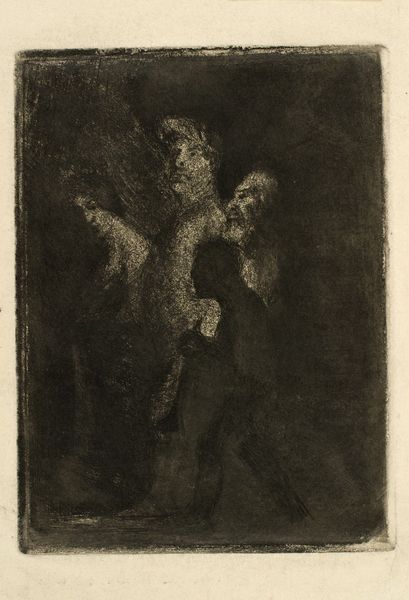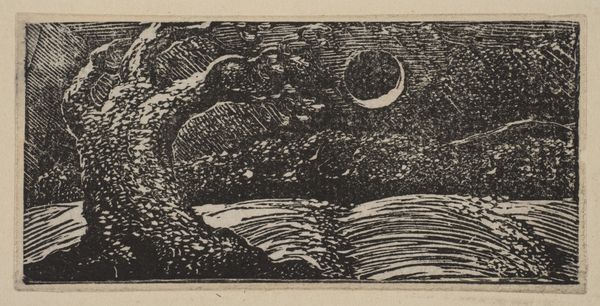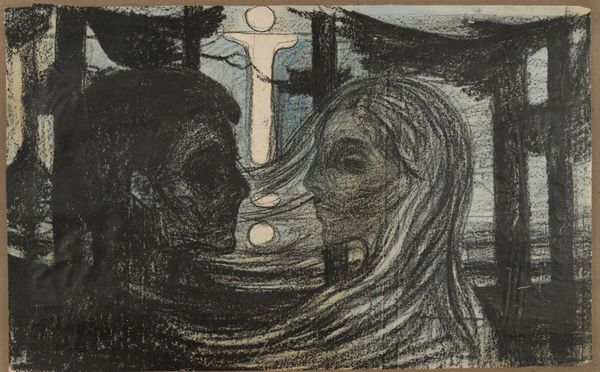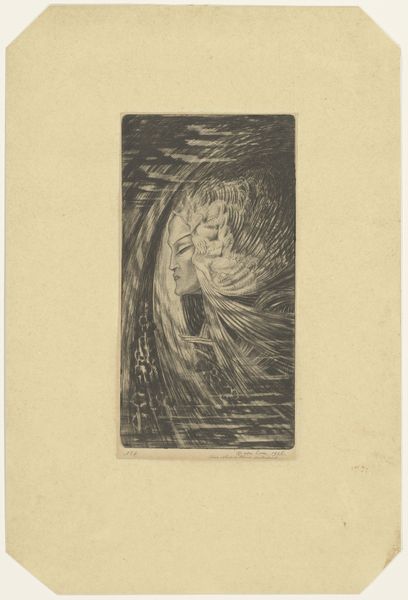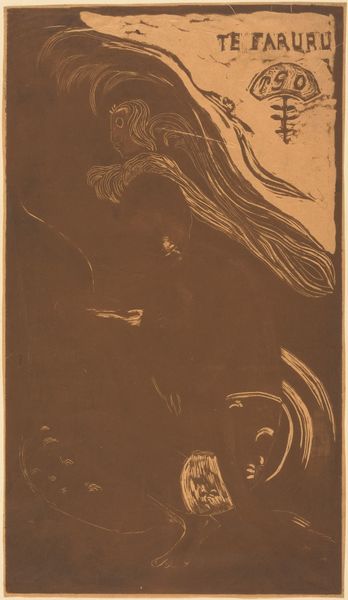
Sans cesse a mes cotes s'agite le demon (Ceaselessly by my side the demon stirs) 1890
0:00
0:00
print, charcoal
# print
#
landscape
#
charcoal drawing
#
figuration
#
pencil drawing
#
symbolism
#
charcoal
Copyright: National Gallery of Art: CC0 1.0
Curator: Here we have Odilon Redon’s 1890 charcoal print, “Sans cesse a mes cotes s'agite le demon,” which translates to “Ceaselessly by my side the demon stirs." It’s a haunting landscape dominated by a massive rock formation. Editor: Haunting is right. The overwhelming darkness presses down, and yet, the radiant orb pierces through. There is a somber intimacy. What is going on? Curator: The title offers some insight, drawing upon Charles Baudelaire’s prose poem from *Petits poèmes en prose.* The stirring demon reflects inner torment. The sun, or perhaps moon, radiates ambiguously. We see a landscape and two almost-nude figures. Editor: Note how those figures huddle at the rock’s edge, vulnerable against the sheer mass of what seems to be nature itself. One of the seated figures seems hunched, hiding, or shielding. The light exposes the land to our sight but does nothing for the individuals. The patriarchy does this too, you know? Curator: Redon deeply engaged with the symbolist movement; for him, visual art opened doors into psychological exploration. This image and this placement can signal many types of conflict – human frailty against a cruel and indifferent natural world, self-doubt warring against creative impulse. There is no narrative resolution offered; it feels permanently suspended. Editor: That suspension—the unresolved tension—is crucial. Injustice operates like this too. The rock of established power looms large, eclipsing genuine possibility and even dimming hope. This stark black-and-white starkness also simplifies in uncomfortable ways. Look at those nude, nearly identical figures, likely representative of every person or every victim. A shame to paint that universal in only one tone. Curator: Symbolism often strives for universal feelings and expressions by de-emphasizing specificity. Redon wasn’t making documentary work, although a contemporary critic might view that absence as problematic, for the historical setting or otherwise. We do respond emotionally to light and darkness. What’s your lasting impression? Editor: How power shapes our vision – obscuring, distorting, sometimes offering fleeting glimpses of freedom, only to snatch them away. Even the most vulnerable may carry shadows in their hearts, or cast their darkness outward. The two together are representative of more than human solitude. What does Redon do for you here? Curator: I see how enduring symbols persist across time and cultures – darkness, light, isolation – mirroring the artist’s interior world as a portal for viewers to meet and connect within the language of feeling. There’s profound hope in visual imagery!
Comments
No comments
Be the first to comment and join the conversation on the ultimate creative platform.
